Nanning Diaries: Hope for a better future
11 June 2014
Nanning Diaries takes you inside a bear farm that will become a sanctuary. The entire transition will take two years and we’ll keep you up to date every step of the way.
We are indebted to the brilliant Animals Asia bear and vet teams for continuing to share their thoughts and challenges.
Zeng Yi, Assistant Team Leader
28.5.2014
 When trying to write about the experience of visiting Nanning Bear Farm I don't know where to start. I had so many mixed feelings and some of them were really hard to express.
When trying to write about the experience of visiting Nanning Bear Farm I don't know where to start. I had so many mixed feelings and some of them were really hard to express.
Nanning is really beautiful city surrounded by mountains and when I arrived at Huahua Big World, I was excited about going to see the bears. I couldn't wait to meet them.
But when I got there I was shocked by the bears and their living conditions.
I don't know how to express how I felt when I first entered one of the sheds and saw those skinny bears in small cages. Some of them stared at me when I came close. Some were exhibiting stereotypic behaviour in their small space enclosure.
It made me feel like crying.
I had tried to prepare myself for the sight of undernourished bears before my trip and I had seen some pictures, but what I saw was beyond my imagination. I don’t think anyone can really understand what the conditions are like until they come here in person.
The bears are so miserable and unhappy.
On our arrival, there was no water. I heard from the farmhands that this actually happens quite often. I can't believe how the bears can endure such heat without water to drink. When we offered the bears our bottled water, they all plunged their heads into it greedily.
The happiest moment for me was offering food or water to the bears. The new diet to them is like the most delicious thing on earth. And they really love water, they like to splash in it or be showered. They move around to make sure every part of their body gets soaked and every so often shake their body – spraying me with water.
I can tell that some of the farmhands care for the bears too. Some know the habits of individual bears – like which bear doesn’t like cabbage or who doesn’t eat tomato.
With people like them, with a leader like [Senior Bear Manager] Heidi [Quine], I am sure that we can make this an amazing place in the future.
The bears have good days ahead – free of suffering and pain.
I just hope that we can convert more farms to sanctuaries, so that more bears can have better futures.
Heidi Quine, Senior Bear Manager
29.05.14
 Moving through Shed 3 offering water and helping the bears to shower I came to the female bear who lives in the cage and cement chamber at the very end of the corridor.
Moving through Shed 3 offering water and helping the bears to shower I came to the female bear who lives in the cage and cement chamber at the very end of the corridor.
Other bears would rush to their former bile extraction cage as I approached, eager to cool down under the hose and drink. This girl however was different. She sat quietly on the concrete steps leading up into her cage with her back to me, head raised towards the sky. Her nose was twitching, trying desperately to gather scents from the air. I called to her to see if she wanted to bathe, but she simply turned her head and glanced over her shoulder, before resignedly turning back to the sky. I moved to see what she was looking for, yet all there was to see was four stained cement walls and a bleak, pale sky. The only break in the monotony was a single tree branch just visible above the walls of her cell.
I don't understand how the spirits of these incredibly intelligent and emotional bears survive in such a barren, hostile environment. One day this bear and her neighbours will know what it is like to sit beneath a tree, grass beneath their paws, the memory of their incarceration far behind them.
BACK
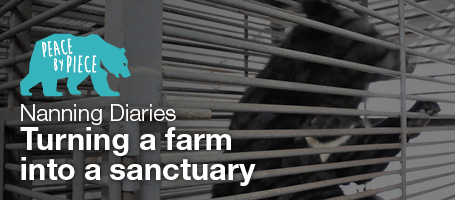
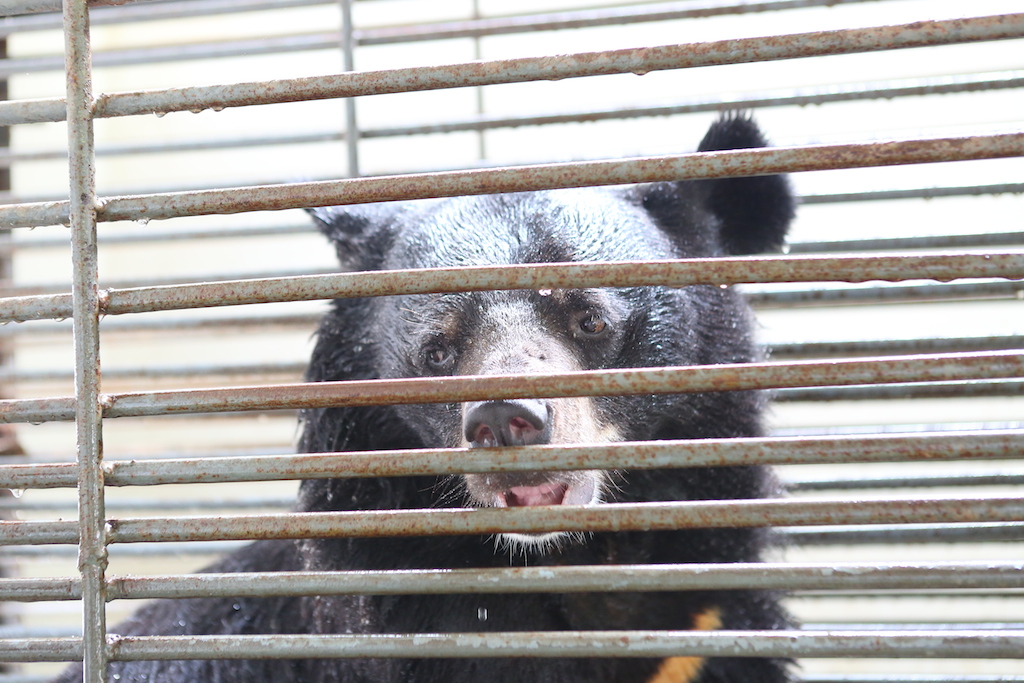
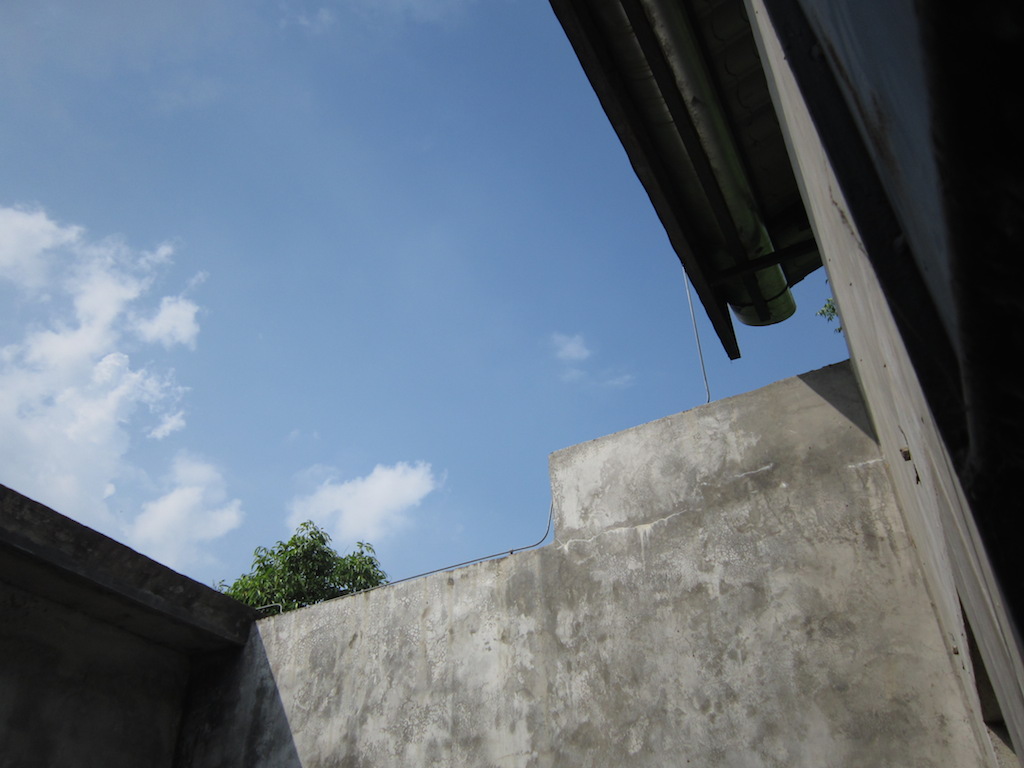





 Freedom after two decades: Moon bears Nang and Mua rescued
Freedom after two decades: Moon bears Nang and Mua rescued
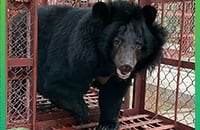 With heavy hearts we say goodbye to our beloved Tulip
With heavy hearts we say goodbye to our beloved Tulip
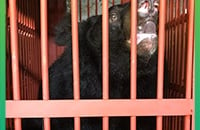 Three moon bears rescued from notorious bear bile farming hotspots in Vietnam
Three moon bears rescued from notorious bear bile farming hotspots in Vietnam